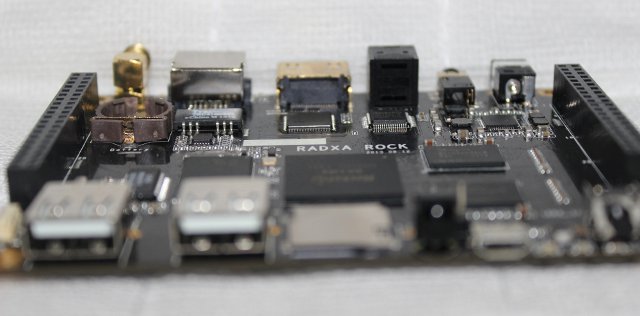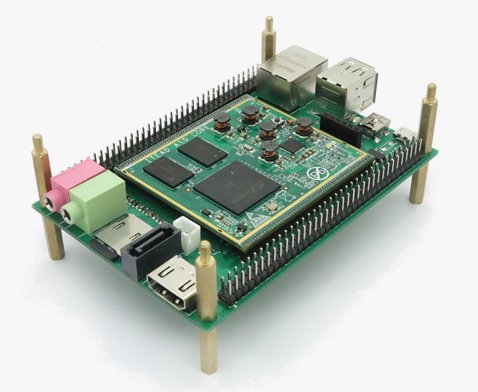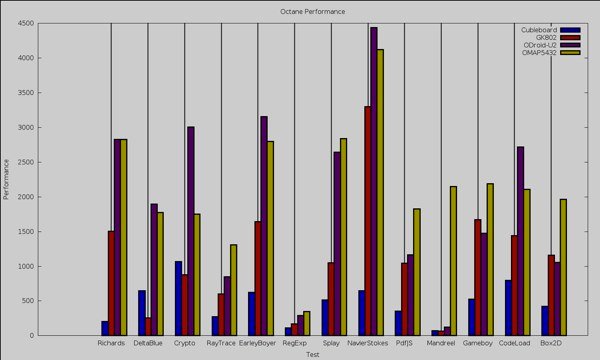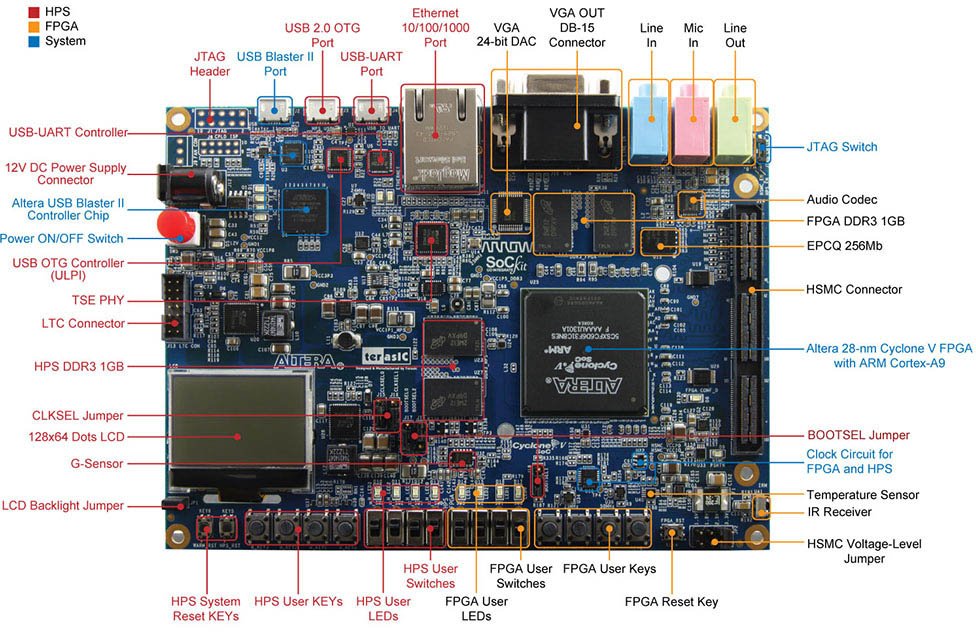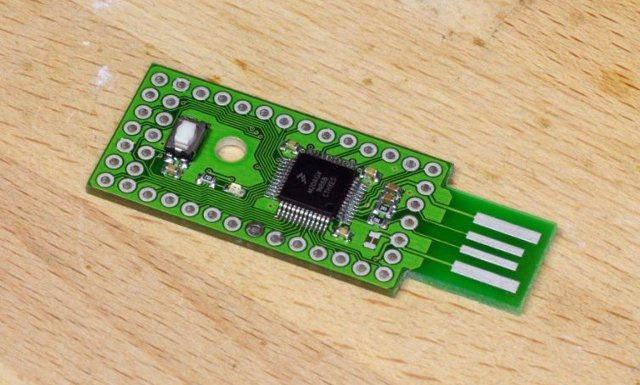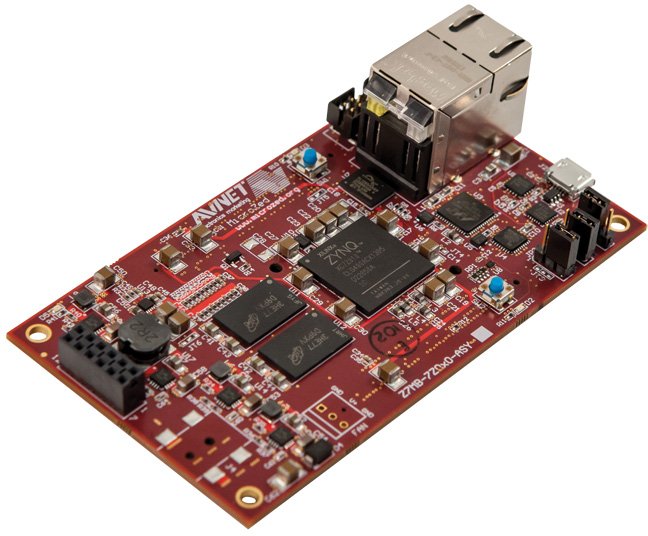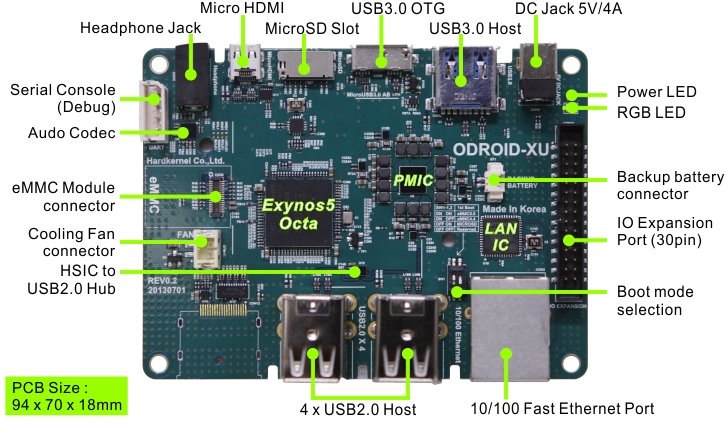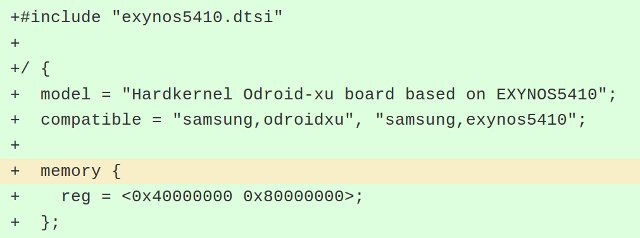As previously mentioned, work was in progress to design development boards based on Rockchip processors. Radxa Rock and Radxa Rock Lite, 2 boards powered by Rockchip RK3188, are now available to early developers, and the final versions will soon be broadly available. Here are the boards specifications: SoC – Rockchip RK3188 ARM Cortex-A9 quad core @ 1.6Ghz + Mali-400 MP4 GPU System Memory – 2GB DDR3 @ 800Mhz (1GB DDR3 @ 800Mhz for Lite version) Storage – 8GB Nand Flash (4GB Nand Flash for Lite version) + micro-SD SDXC up to 128GB Video Output – HDMI 1.4 up to 1080p@60hz, andAV output Connectivity: 10/100M Ethernet port WIFI 150Mbps 802.11b/g/n with antenna Bluetooth – Bluetooth 4.0 (Not in Lite version) Audio I/O – Audio S/PDIF, headphone jack USB – 2x USB 2.0 host port, micro USB OTG Debugging – Serial Console Misc – IR sensor, power key, recovery key, reset key, […]
$59 Iteaduino Plus ARM Linux Board Features Raspberry Pi and Arduino Compatible Headers
Iteaduino Plus is a development platform designed by ITEAD studio, a Shenzhen based company, powered by AllWinner A10 with 1GB RAM, a micro SD card slot, expansion header, etc… Overall features are very similar to the Cubieboard, but the platform is comprised of a baseboard and a CPU module. The baseboard features a 26-pin GPIO header compatible with the one on the Raspberry Pi, and you can add an expansion board to connect Arduino Shields. Iteaduino Plus specifications: SoC – AllWinner A10 Cortex A8 @ 1GHz with Mali400 GPU System Memory – 1GB DDR3 @480MHz Storage – 1x micro SD slot, 1x SATA Video Output – HDMI Connectivity – 10/100M Ethernet USB – 2x USB Host, 1x USB OTG Audio – 3.5mm Audio in and out jacks Expansion headers (see pin assignment) 2x 2×36-pin (Total 144, but not all used) – I2C, SPI, RGB/LVDS, CSI/TS, FM-IN, ADC, CVBS, VGA, SPDIF-OUT, […]
Texas Instruments OMAP5432 EVM Benchmarked Against ODROID-U2, BeagleBone Black, GK802… and an Intel Core i7-2600K based PC
Texas instruments and SVTronics announced an OMAP5 evaluation board a couple of months ago. The board features OMAP5432 dual Cortex A15, dual Cortex M4 SoC, 2GB RAM, a 4GB eMMC module, USB 3.0, SATA and more. SVTronics sent a board to Linux.com, where they wrote a short review, followed by an article benchmarking the OMAP5 EVM against AllWinner A10, Freescale i.MX6, Exynos 4412 Prime, and TI Sitara platforms, namely Cubieboard, GK802, ODROID-U2, and BeagleBone Black, all running Linux. Ben Martin, the writer, also benchmarked the board against a Linux PC powered by an Intel Core i7-2600K processor (4 cores, 8 thread, clocked at 3.4GHz, with a turbo frequency up to 3.8GHz). The board used was an early version, clocked at 800MHz, and later in September, all boards will be clocked at 1.5Ghz, so for benchmarks that stress the CPU, you could expect almost double the performance. With that in mind, […]
$249 Terasic SoCKit Development Kit Features Altera Cyclone V SX Dual Core A9 + FPGA SoC
There seems to be a lot a development going on around dual core A9 + FPGA SoCs from Xilinx or Altera these days, and Terasic has recently announced SoCKit, a development board based on Altera Cyclone V SX SoC with 2GB RAM (1GB for ARM cores, 1GB for FPGA), 110K logic elements, etc… Here are the specifications listed on Terasic website: FPGA Device – Cyclone V SX SoC—5CSXFC6D6F31C8NES: 110K LEs, 41509 ALMs 5140 M10K memory blocks 6 FPGA PLLs and 3 HPS PLLs 2 Hard Memory Controllers 3.125G Transceivers ARM-based hard processor system (HPS) @ 800 MHz, Dual-Core ARM Cortex-A9 MPCore Processor with 512 KB of shared L2 cache, 64 KB of scratch RAM, Multiport SDRAM controller (DDR2, DDR3, LPDDR1, and LPDDR2), and 8-channel direct memory access (DMA) controller Configuration and Debug: Quad Serial Configuration device – EPCQ256 for FPGA On-Board USB Blaster II (micro USB type B connector) Memory […]
MC HCK is a $5 ARM Development Board Powered by Freescale K20 MCU
MC HCK (pronounced McHack) is a tiny and cheap development board powered by Freescale K20 MCU (ARM Cortex M4) that can be easily programmed via USB. The board has been designed with KiCad, is fully open source hardware, and it’s supposed to cost as low as $5. The only problem, or main advantage, depending on how you look at it, is that it’s not available for sale (yet), but instead you’ll need to make it yourself. The actual cost of doing so will be well over $5 (About $35), but the BoM cost is about $5, and you can make 5 boards for this price, or about $7 per board. The detailed steps are explained on McHck blog, but they can summarized as follows: Order 10 PCB using the gerber files via services such as Seeedstudio or Iteadstudio Order 5 free samples of Freescale K20 MCU. Select MK20DX128VLF5 part, and […]
$199 MicroZed is a Low Cost Version of Zedboard ARM+FPGA Linux Development Board
ZedBoard is a low cost development board based on Xilinx Zynq-7020 SoC featuring two Cortex A9 cores and FPGA fabric, together with lots of ports and expansion I/Os, and running Linux. The problem is that “low cost” for this type of board still means $395 (or around $300 for academia), and you only get to this price because it’s been subsidized, and the normal price is actually $495… That’s why Avnet has just come with a new version of the evaluation kit called microZed that sells for $199 and targets applications such as general Zynq-7000 AP SoC evaluation and prototyping, embedded system-on-module (SOM) applications, embedded vision, test & measurement, motor control and software-defined radio. MicroZed technical specifications: SoC – Xilinx XC7Z010-1CLG400C (Zynq-7010) System Memory – 1 GB of DDR3 SDRAM Storage – 128 Mb of QSPI Flash + Micro SD card interface Connectivity 10/100/1000M Ethernet USB 2.0 USB-UART User I/O […]
$149 Hardkernel ODROID-XU Octa Core big LITTLE Development Board
Just a few days after noticing code for ODROID-XU in hardkernel repository, the company has now launched ODROID-XU development board powered by Exynos 5410 octa core processor with 2GB RAM, USB 3.0, and more for just $149 (as long as you order in August, $169 after that). Here are ODROID-XU hardware specifications: SoC – Samsung Exynos5 Octa Cortex-A15 and Cortex-A7 big.LITTLE processor with PowerVR SGX544MP3 GPU System Memory – 2GB LPDDR3 RAM Storage – micro SD slot, eMMC 4.5 connector Video Output – micro HDMI + MPI LCD interface and Touch screen I2C ports (IPEX-40PIN) Audio – micro HDMI, headphone jack, MAX98090 Audio Codec Connectivity – 10/100M Ethernet via USB 2.0 (LAN9730) USB – 1x USB 3.0 Host, 1x USB 3.0 OTG, and 4x USB 2.0 Host Expansion Header – 30 pins (GPIO/IRQ/SPI/ADC) Misc – PWM connector for Cooler, Power Supply – 5V/4A (Plug specification is inner diameter 2.1mm and […]
Hardkernel is Working on ODROID-XU Development Board Based on Exynos 5410 Octa Core Processor
Hardkernel have already done a good job at bringing low cost, high performance development boards based on Exynos 4 Quad processor with boards such as ODROID-X, ODROID-U2, or ODROID-X2. But it appears they are not stopping here, and have recently committed code to support ODROID-XU development board based on Exynos 5410, the 8-core big.LITTLE SoC from Samsung, used in devices such as Galaxy S4. The committed code linked above point the device tree files in arch/arm/boot/dts/ (exynos5410-odroidxu.dts and exynos5410-pinctrl.dtsi) where we can see the board will have 2 GB RAM, and the Cortex A15 cores with be clocked at 1.6 GHz. Exynos5410-odroidxu.dts has been removed from 3.11 branch, so the link above points to an earlier commit. Exynos 5410 might have been the first big.LITTLE processor ever available, but it comes with a major flaw, as it only supports cluster migration (all 4 Cortex A15 or all 4 Cortex A7 […]


